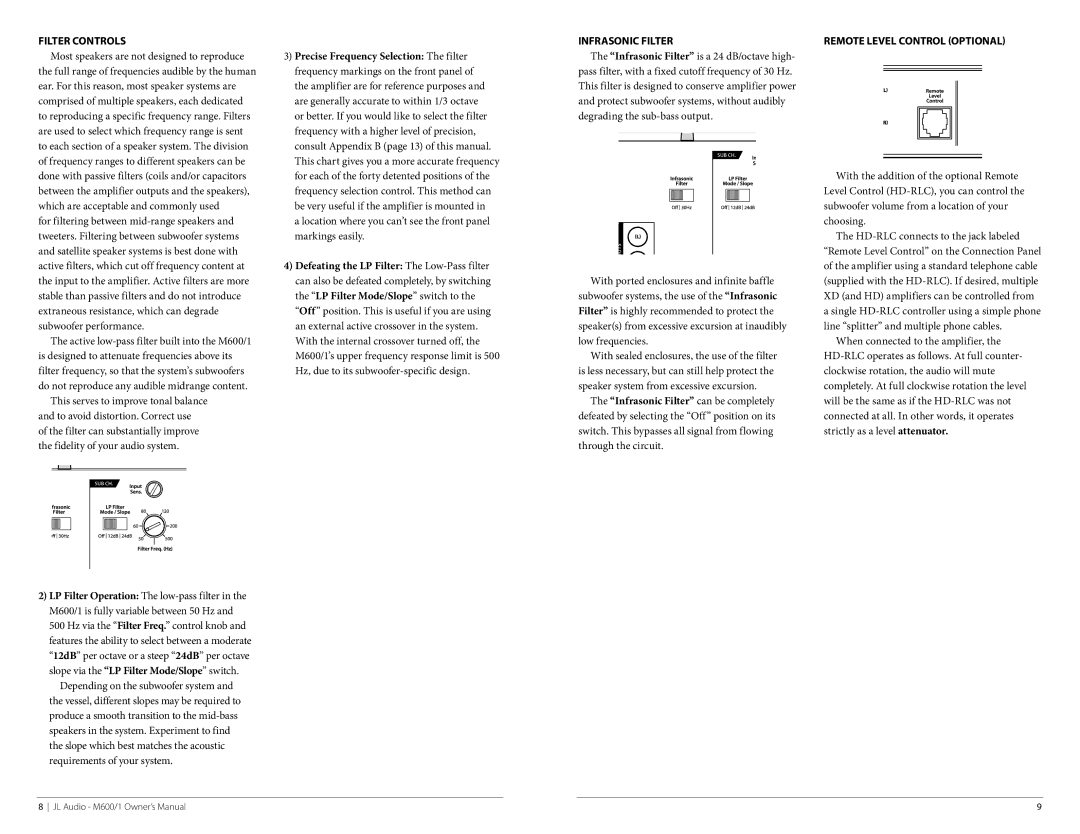
Filter Controls
Most speakers are not designed to reproduce
the full range of frequencies audible by the human ear. For this reason, most speaker systems are comprised of multiple speakers, each dedicated to reproducing a specific frequency range. Filters are used to select which frequency range is sent to each section of a speaker system. The division of frequency ranges to different speakers can be done with passive filters (coils and/or capacitors between the amplifier outputs and the speakers), which are acceptable and commonly used
for filtering between
The active
This serves to improve tonal balance and to avoid distortion. Correct use of the filter can substantially improve the fidelity of your audio system.
2)LP Filter Operation: The
500 Hz via the “Filter Freq.” control knob and features the ability to select between a moderate
“12dB” per octave or a steep “24dB” per octave slope via the “LP Filter Mode/Slope” switch.
Depending on the subwoofer system and the vessel, different slopes may be required to produce a smooth transition to the
3)Precise Frequency Selection: The filter frequency markings on the front panel of the amplifier are for reference purposes and are generally accurate to within 1/3 octave or better. If you would like to select the filter frequency with a higher level of precision, consult Appendix B (page 13) of this manual. This chart gives you a more accurate frequency for each of the forty detented positions of the frequency selection control. This method can be very useful if the amplifier is mounted in
a location where you can’t see the front panel markings easily.
4)Defeating the LP Filter: The
INFRASONIC FILTER
The “Infrasonic Filter” is a 24 dB/octave high- pass filter, with a fixed cutoff frequency of 30 Hz. This filter is designed to conserve amplifier power and protect subwoofer systems, without audibly degrading the
With ported enclosures and infinite baffle subwoofer systems, the use of the “Infrasonic Filter” is highly recommended to protect the speaker(s) from excessive excursion at inaudibly low frequencies.
With sealed enclosures, the use of the filter is less necessary, but can still help protect the speaker system from excessive excursion.
The “Infrasonic Filter” can be completely defeated by selecting the “Off” position on its switch. This bypasses all signal from flowing through the circuit.
Remote Level control (Optional)
With the addition of the optional Remote Level Control
The
When connected to the amplifier, the
8 JL Audio - M600/1 Owner’s Manual | 9 |
